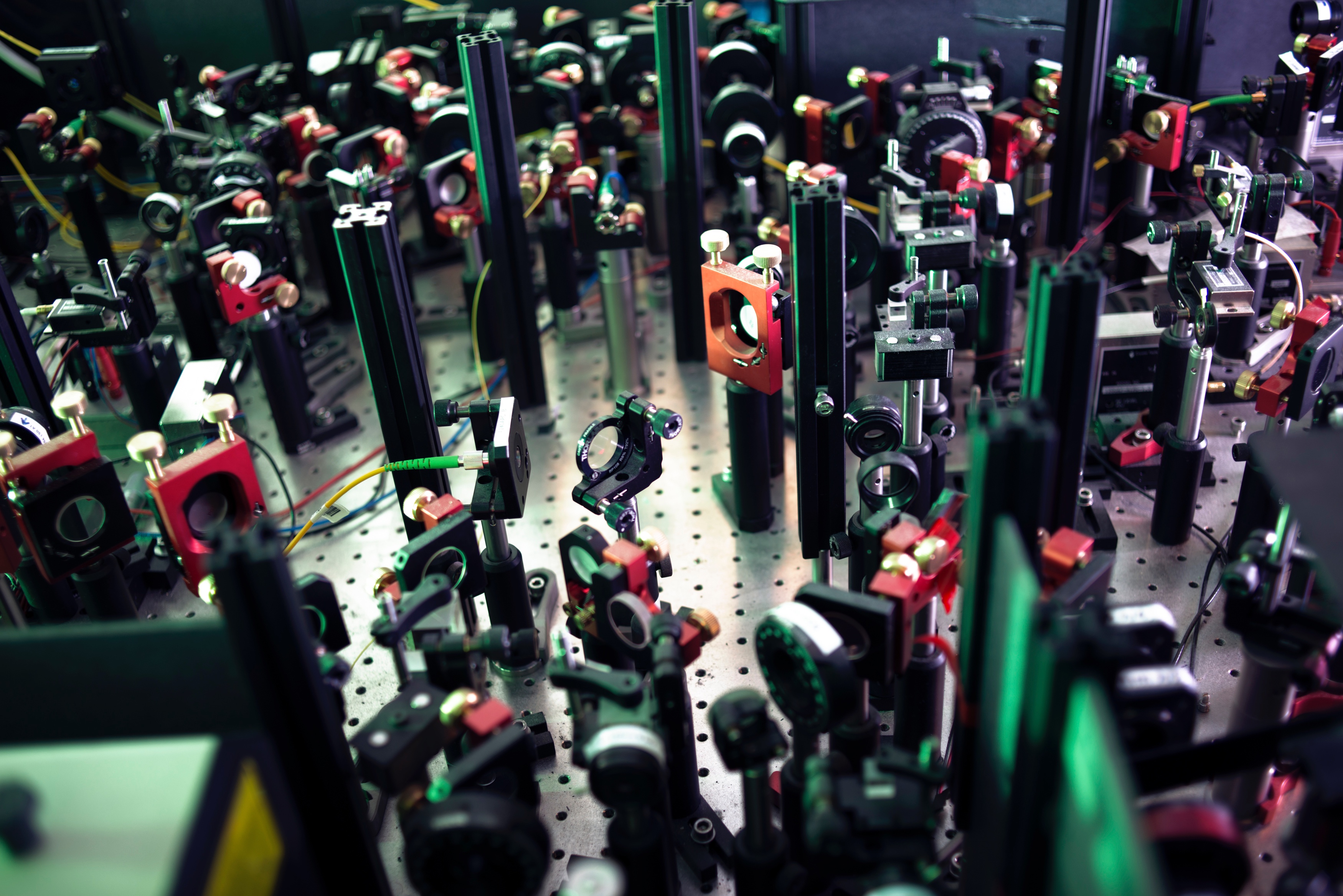Quantum
internet
Building a secure quantum internet
A quantum internet is a radically new technology that connects (quantum) devices, such as quantum computers, over large distances. This will allow for novel innovations, including levels of privacy, security, and computation power that are impossible to achieve with today’s internet. At QuTech, our mission is to provide the enabling technology for the future quantum internet and showcase the very first fully functional quantum networks.
We are unique in that we’re working on every single aspect necessary for realizing quantum networks: we’re developing the software, the interface between software and hardware, and the hardware.

Quantum network protocols and application
Long-term goal:
To develop a full quantum network stack and novel applications for a quantum internet.
Highlights
We experimentally demonstrated, using remote solid-state quantum network nodes, a link layer, and a physical layer protocol for entanglement-based quantum networks (npj Quantum Information). The link layer abstracts the physical-layer entanglement attempts into a robust, platform-independent entanglement delivery service. The system is used to run full state tomography of the delivered entangled states, as well as preparation of a remote qubit state on a server by its client.
This result is important on the road from today’s quantum communication demonstrations to a future large-scale quantum network, as quantum hardware should be accompanied by robust user controls. Moreover, the abstraction of tasks and services offered by the quantum network should enable platform-independent applications to be executed without knowledge of the underlying physical implementation. Our results mark a clear transition from physics experiments to quantum communication systems, which will enable the development and testing of components of future quantum networks.

Quantum network hardware
Long-term goal:
Experimental demonstrations that push the frontier of quantum networking hardware and yield new enabling technologies and insights.
Highlights
We used teleportation to send quantum information across our rudimentary quantum network (Nature). Our quantum network is composed of three nodes, connected in a line. The quantum information was teleported over a quantum link between the outer nodes. This first of its kind is an important step towards a future quantum Internet. Our results were covered by media worldwide (New York Times, Le Monde, El Pais, etc.). See our press release for further information.
We demonstrated a key technology for linking quantum nodes over existing telecom fibre, by realizing quantum interference of photons emitted by quantum devices at telecom wavelengths (PRX Quantum). The technique, which also allows for compensating intrinsic differences between the quantum devices, is an important step for bringing quantum networks out of the lab and into real-world settings. See also our press release.

Model of the quantum processor used in the research. The qubits are formed by the nitrogen-vacancy center (green and blue), and 13C nuclear spins (orange). By spreading out a single qubit of information over five entangled spin qubits (purple connections), a logical qubit of information is formed that can be operated fault tolerantly. Credit: Taminiau lab at QuTech.
Quantum processors for quantum networks
Long-term goal:
To develop and exploit multi-qubit quantum processors for use in a quantum internet and networked computing.
Highlights
In 2022, we made in important step forward towards quantum error correction and fault tolerance. We demonstrated the fault-tolerant operation of a logical qubits based on spin qubits in diamond (Nature). For this, we encoded a logical qubit of information over 5 nuclear-spin qubits in QuTech’s 27-qubit quantum processor. We then applied the recently developed paradigm of flag-fault tolerance to make quantum error correction fault tolerant by adding two additional auxiliary qubits. The team showed the fault-tolerant encoding, gate operations and stabilizer measurements for syndrome extraction in quantum error correction. The ability to operate on logical qubits in a fault-tolerant way, rather than on physical qubits that are fundamentally error prone, is a milestone for the field of solid-state spin qubits. This work is part of our collaborations with Fujitsu and Element Six. See also our press release.
Another highlight was our realization of a new type of qubit that consists of a pair of interacting nuclear spins in diamond (Phys. Rev. X). We showed that these systems form extremely coherent quantum systems: the inhomogeneous dephasing time T2* exceeds 2 minutes. This is the longest dephasing time reported for an individually controlled qubit in any platform. We also showed that we can control two of such qubits and bring them into an entangled state with a projective parity measurement. While the operation speed of these qubits is too slow for large scale quantum computation, they might make excellent quantum memory qubits for medium-term quantum networks.

Quantum Network Explorer: unlocking the power of quantum networks
Long-term goals:
To showcase the world’s first quantum internet, make quantum internet technology accessible to the public, and build and engage a global community.
Highlights
After the launch of the Quantum Network Explorer (QNE) in November 2021, we have been continuously growing a global community of users both by engaging users online and by organizing various events. For example, we launched a QNE challenge at the QC Hack hackathon in April and co-organized the pan-European Quantum Internet hackathon in December.
Throughout 2022 we have made improvements to the QNE platform and its Application Development kit (ADK). In December, we released a new feature of our QNE platform: the Community Application Library. This feature allows developers to upload and share their QNE applications, which has already helped to grow the number of applications available to QNE users.
